Polar Fitness Test with
OwnIndex® Measure your fitness level in 5
minutes
A fitness test that measures your
aerobic/cardiovascular fitness at rest in just five minutes. The result,
Polar OwnIndex, predicts your
maximal
oxygen uptake (VO2max).
The Polar Fitness Test is
a revolutionary way to test aerobic fitness. Gender, age, height, body weight,
in addition to level of physical activity, heart rate and heart rate
variability at rest are all factors influencing the test results. The
OwnIndex ranges usually from 20 to 95 and is comparable to
VO2max, the golden standard of aerobic
fitness.
OwnIndex is most meaningful when following changes in
your fitness over a long period of time. Find out how fit you are for your age
and gender by comparing your result to the global references listed in the
Polar user's manuals.
With the Polar Fitness Test you can measure
your aerobic fitness by yourself, automatically and without any exertion. No
other equipment other than a heart rate monitor is needed. The Polar Fitness
Test is as accurate in predicting the VO2max as any submaximal
fitness test.
What is
Cardiovascular Fitness?
Cardiovascular (or aerobic)
fitness is one of the most important components of fitness. It i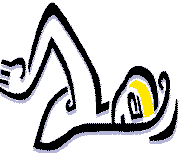 s measured as the amount of oxygen
transported in the blood and pumped by the heart to the working muscles and as
the efficiency of the muscles to use that oxygen. Increasing cardiovascular
fitness means increasing the capability of the heart and the rest of the
cardiovascular system in their most important task, to supply oxygen and energy
to your body. s measured as the amount of oxygen
transported in the blood and pumped by the heart to the working muscles and as
the efficiency of the muscles to use that oxygen. Increasing cardiovascular
fitness means increasing the capability of the heart and the rest of the
cardiovascular system in their most important task, to supply oxygen and energy
to your body.
Having good
cardiovascular fitness has many health benefits. For example, it decreases your
risk of cardiovascular diseases, stroke, high blood pressure and other
diseases.
Cardiovascular fitness is best
improved by activities, which employ large muscle groups working dynamically.
Such activities include walking, jogging, running, swimming, skating, cycling,
stair climbing and cross-country skiing.
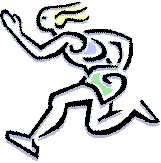 The heart is like any other muscle - it
becomes stronger and more efficient after practice. Heart rate is a
quantitative measure of heart's work. At rest a healthy heart of an average
individual beats approximately 70 beats per minute. A conditioned heart beats
much less at rest, only 40 to 50 beats per minute or even less. Heart rate
variability is a quality measure of heart's work. The lower the resting heart
rate the higher the heart rate variability, and thus the better the quality of
heart's functions. The heart is like any other muscle - it
becomes stronger and more efficient after practice. Heart rate is a
quantitative measure of heart's work. At rest a healthy heart of an average
individual beats approximately 70 beats per minute. A conditioned heart beats
much less at rest, only 40 to 50 beats per minute or even less. Heart rate
variability is a quality measure of heart's work. The lower the resting heart
rate the higher the heart rate variability, and thus the better the quality of
heart's functions.
Cardiovascular fitness is
related to age, gender, exercise habits, heredity and cardiovascular clinical
status. Maximum values occur between ages 15 and 30 years, decreasing
progressively with age. At the age of 60, the mean maximal aerobic power in men
is approximately three fourths of that at the age of 20. With sedentary
lifestyle, there is a 10 % reduction in the mean maximal aerobic power per
decade, the reduction with an active lifestyle being less than 5 %.
Fitness tests for aerobic
fitness
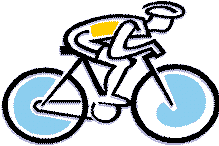 There are numerous fitness tests for aerobic fitness
in the world ranging from sophisticated laboratory tests to simple field tests.
They are all designed to measure or predict oxygen uptake (maximal aerobic
power, VO2max). Most of the predictive tests target to estimate the
oxygen uptake of the body via heart rate and/or workload. Depending on how hard
the body is exhausted during the tests, they can be divided into two
categories: maximal tests and submaximal tests. There are numerous fitness tests for aerobic fitness
in the world ranging from sophisticated laboratory tests to simple field tests.
They are all designed to measure or predict oxygen uptake (maximal aerobic
power, VO2max). Most of the predictive tests target to estimate the
oxygen uptake of the body via heart rate and/or workload. Depending on how hard
the body is exhausted during the tests, they can be divided into two
categories: maximal tests and submaximal tests.
The most common maximal test
procedures used for testing cardiovascular fitness are:
1.
Maximal oxygen uptake test (on a treadmill or cycle ergometer)
2. Shuttle
run test (Leger test)
3. Continuous run test for a fixed time or distance
(Cooper tests)
The most common submaximal test
procedures used for testing cardiovascular fitness are:
1.
Cycle tests (Åstrand test, WHO cycle test, PWC170 test)
2. Step tests
(Harvard step test, Queens College step test)
3. Walking tests (UKK Walk
test, Rockport Walk test)
Maximal tests have been
designed for the needs of professional athletes rather than for those of
non-competitive exercisers. Very seldom a normal, active man or woman has the
possibility to costly and exhaustive laboratory tests.
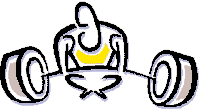 Still, many of them are interested in
their fitness. What is my fitness level? Do I need to start exercising? How to
follow my improvement best? Can I see the improvement with my heart rate
monitor? Still, many of them are interested in
their fitness. What is my fitness level? Do I need to start exercising? How to
follow my improvement best? Can I see the improvement with my heart rate
monitor?
Polar Fitness
Test™
Polar Fitness Test is a breakthrough in the world of aerobic
fitness testing. It is developed to measure cardiovascular fitness based on the
changes in your resting heart's beating, heart rate variability. Polar Fitness
Test helps people to get information about their physical condition easily.
They can now test fitness all by themselves, fully automatically and best of
all, safely, without any exhaustion in less than five minutes.
Test procedure
The components of the Polar
Fitness Test are gender, age, height, and body weight of the person, the level
of physical activity and heart rate as well as heart rate variability measured
at rest. Once the first five items are given, the test can start. The duration
is at maximum 5 minutes and the progress is displayed graphically. The person
who is testing herself/himself should be at rest in a laying or sitting
position. Any disturbances, such as talking during the test or surrounding
noises, should be avoided.
Test equipment
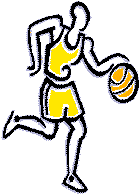 .No other equipment such as a treadmill is
needed. No special facilities or testing personnel is needed either. Anyone can
do the test by himself/herself or let the trainer or exercise physiologist to
do it. The test can take place anywhere from home to office or to health club
as long as the environment is peaceful. However, for maximal consistency and
reliability it is recommended to keep the testing place, time, body position
and testing environment the same every time when the test is repeated. .No other equipment such as a treadmill is
needed. No special facilities or testing personnel is needed either. Anyone can
do the test by himself/herself or let the trainer or exercise physiologist to
do it. The test can take place anywhere from home to office or to health club
as long as the environment is peaceful. However, for maximal consistency and
reliability it is recommended to keep the testing place, time, body position
and testing environment the same every time when the test is repeated.
Interpreting the test results
In every
fitness test, you need to know what the given result means to benefit from it.
In Polar Fitness Test the person gets a score, Polar OwnIndex, which is
comparable to VO2max, a commonly used descriptor of aerobic fitness.
Therefore the range for the Polar Fitness Index is the same as that for
VO2max, from 25, which can be measured for unfit sedentary
individual, to 95, which is the level reached by Olympic athletes, such as top
cross-country skiers. Fitness tests are most useful when following individual
progress by comparing new results to previous ones.
National norms can be used to
compare the test results to the average values of those with the same age and
gender. For this comparison up-to-date results measured in a large sample of a
representative population are needed. Below is one example of normal values
presented as a mean and standard deviation values according to the age group
(Fletcher et al. 1995).
|
Age, yrs |
VO2max, ml/min/kg |
|
|
Men |
Women |
|
20-29 |
43(7) |
36(7) |
|
30-39 |
42(7) |
34(6) |
|
40-49 |
40(7) |
32(6) |
|
50-59 |
36(7) |
29(5) |
Individual
OwnIndex™ can be compared to the population norms as follows: One standard
deviation around the mean (half of SD up and half down) represents "average
fitness". E.g. for a 33-year-old woman index between 31-37 (34-3 and 34+3)
represents "average fitness" compared to other women of the same age. An index
less than 31 is below the average and an index more than 37 is above the
average.
Safety
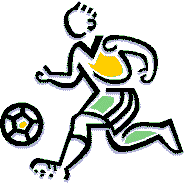 Polar Fitness Test is an exceptional test
because it measures your body's response in rest. This is unique since there is
only one other aerobic fitness test, so called Non-Exercise Fitness Test
(Jackson et al. 1990), which does not require exercise performance for fitness
assessment. This test is incorporating physical activity and body mass index,
BMI. The safety of the Polar Fitness Test can be fully guaranteed, which
broadens the possibilities of using this test to persons who have previously
been out of the reach of fitness testing due to health risks in exhaustion, for
example the elderly and those with musculoskeletal disorders. Polar Fitness Test is an exceptional test
because it measures your body's response in rest. This is unique since there is
only one other aerobic fitness test, so called Non-Exercise Fitness Test
(Jackson et al. 1990), which does not require exercise performance for fitness
assessment. This test is incorporating physical activity and body mass index,
BMI. The safety of the Polar Fitness Test can be fully guaranteed, which
broadens the possibilities of using this test to persons who have previously
been out of the reach of fitness testing due to health risks in exhaustion, for
example the elderly and those with musculoskeletal disorders.
Privacy
Not all individuals
feel comfortable being measured by someone else or being compared with others.
Polar Fitness Test can be conducted privately without participation into e.g.
mass testing. Some people with low fitness level may be embarrassed about their
poor physical condition and prior to starting an organised exercise program
that includes testing in the beginning, prefer to wait for weeks before joining
in, just to avoid the humiliation. People should not be humiliated by test
results of poor physical condition.
Monitoring the progress
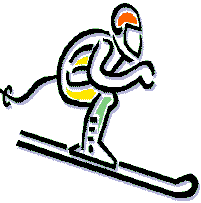 It takes a minimum of 6 weeks on an
average to see a demonstrable change in cardiovascular fitness. Less fit
individuals see progress even more rapidly and for more active individuals more
time is needed. The purpose of Polar Fitness Test is the same as for all
fitness tests, to monitor this progress. For less active people it's a good
idea to enter the more active world of health and fitness with the Polar
Fitness Test. For more active people, who have never been tested and who aren't
really aware of the state of their fitness, it gives motivation to keep going.
It rewards any fitness enthusiast to see the improvement with one's own
eyes. It takes a minimum of 6 weeks on an
average to see a demonstrable change in cardiovascular fitness. Less fit
individuals see progress even more rapidly and for more active individuals more
time is needed. The purpose of Polar Fitness Test is the same as for all
fitness tests, to monitor this progress. For less active people it's a good
idea to enter the more active world of health and fitness with the Polar
Fitness Test. For more active people, who have never been tested and who aren't
really aware of the state of their fitness, it gives motivation to keep going.
It rewards any fitness enthusiast to see the improvement with one's own
eyes.
To be able to follow the progress you have to start with
measuring the baseline.
Polar
Fitness Test gives you an excellent possibility to create this baseline. For
example, if you decide today to start a regular fitness program the first thing
you have to do is to conduct the Polar Fitness Test. Let's assume it gives you
an index of 40. This is now your baseline value.
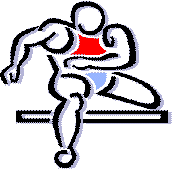 An
average change in cardiovascular fitness for adults is 12-15 % in 10-12 weeks
if moderate intensity exercise has been conducted 3-4 times a week at least for
30 minutes each time. An
average change in cardiovascular fitness for adults is 12-15 % in 10-12 weeks
if moderate intensity exercise has been conducted 3-4 times a week at least for
30 minutes each time.
In our example this would mean an
index increasing from 40 to 45 in 3 months. With Polar Fitness Test™ the
progress can be monitored even weekly. However, the progress is slow and it is
not the exact values, but rather the trend, that is the most important thing to
follow. Losing body weight also increases the index.
Validity and reliability of Polar Fitness
Test™
Validity of a test means that the test
measures what it is supposed to measure and not something else. The test has
been originally developed using artificial neural networks on 305 laboratory
fitness measurements of healthy Finnish men and women (Väinämö
et al. 1996). The correlation coefficient between the laboratory measures and
prediction values was 0.97 and the mean error in VO2max prediction was 6.5
%.
 In further development of the test 119
fitness measurements of healthy American men and women were included, making a
total of 424, and the artificial neural network was modified into Polar Fitness
Test. In a study on 52 healthy men, who didn't belong to the group on whom the
test was developed, the mean absolute error in Polar Fitness Test prediction
was less than 12 % compared to the laboratory measures of maximal aerobic
power. Thus the validity of the Polar Fitness Test is good. In further development of the test 119
fitness measurements of healthy American men and women were included, making a
total of 424, and the artificial neural network was modified into Polar Fitness
Test. In a study on 52 healthy men, who didn't belong to the group on whom the
test was developed, the mean absolute error in Polar Fitness Test prediction
was less than 12 % compared to the laboratory measures of maximal aerobic
power. Thus the validity of the Polar Fitness Test is good.
The reliability
of a test is a measure of how consistent and reproducible the test results are
on consecutive trials. The reliability of the Polar Fitness Test™ is good.
When 11 subjects repeated the test in the morning, in the middle of the day and
in the evening during eight days, in both sitting and laying positions, the
average individual standard deviation of consecutive test results was less than
8 % from the individual mean value. The standard deviations calculated
separately for each time of the day were all smaller than the standard
deviation of all results. This indicates that the test can be conducted at any
time of the day but it should always be repeated at about the same time.
Polar Fitness
Test™ provides an incentive to exercise and improve fitness. It is an
excellent motivational tool for anyone who wants to achieve his/her fitness
goals.
References
ACSM. The Fitness Book.
2nd ed. 1998. Human Kinetics.
Devereux Rob.
Fitness testing - to do or not to do? Asiafit March/April 1998, p. 24.
Fletcher,
Balady, Froelicher, Hartley, Haskell, Pollock. Exercise Standards. A statement
for healthcare professionals from the American Heart Association. Circulation
91,2,580-615,1995.
Jackson, Blair,
Mahar, Ross and Stuteville. Prediction of functional aerobic capacity without
exercise testing. Med Sci Sports Exerc 22,6,863-870,1990.
Väinämö, Tulppo, Mäkikallio, Röning. An
artificial neural network for human aerobic fitness approximation. Proceeding
of the International Neural Network ICNN, Washington DC, June 3-6, 1996, pp.
1939-1949. |